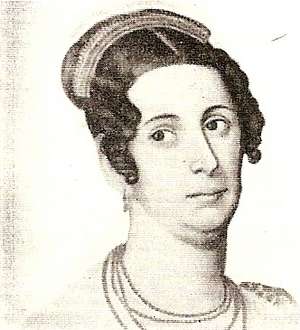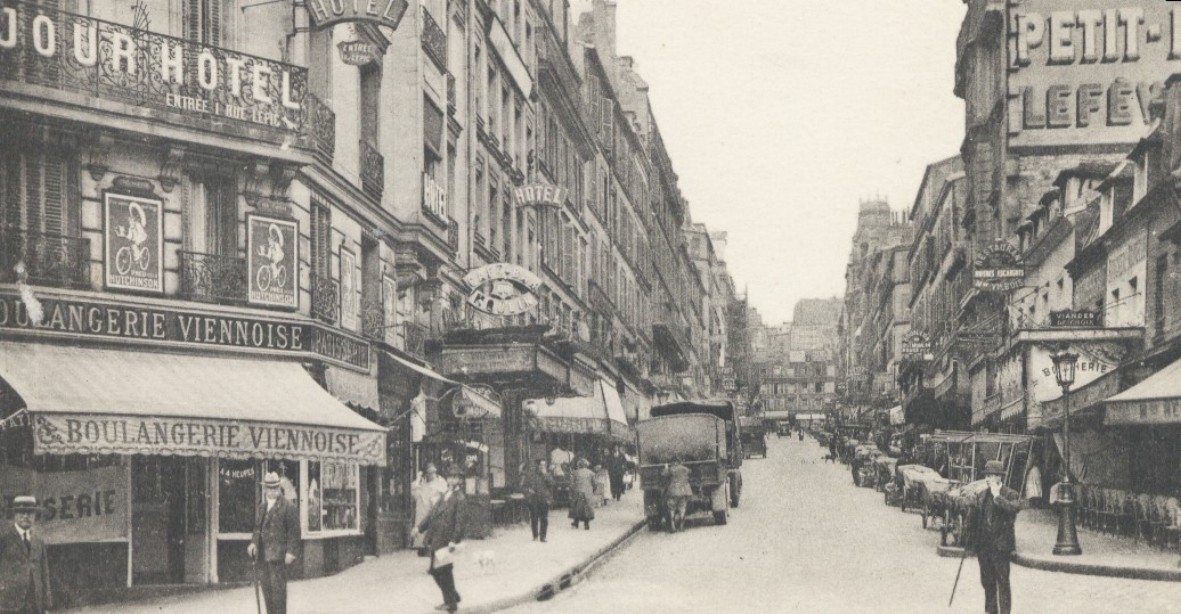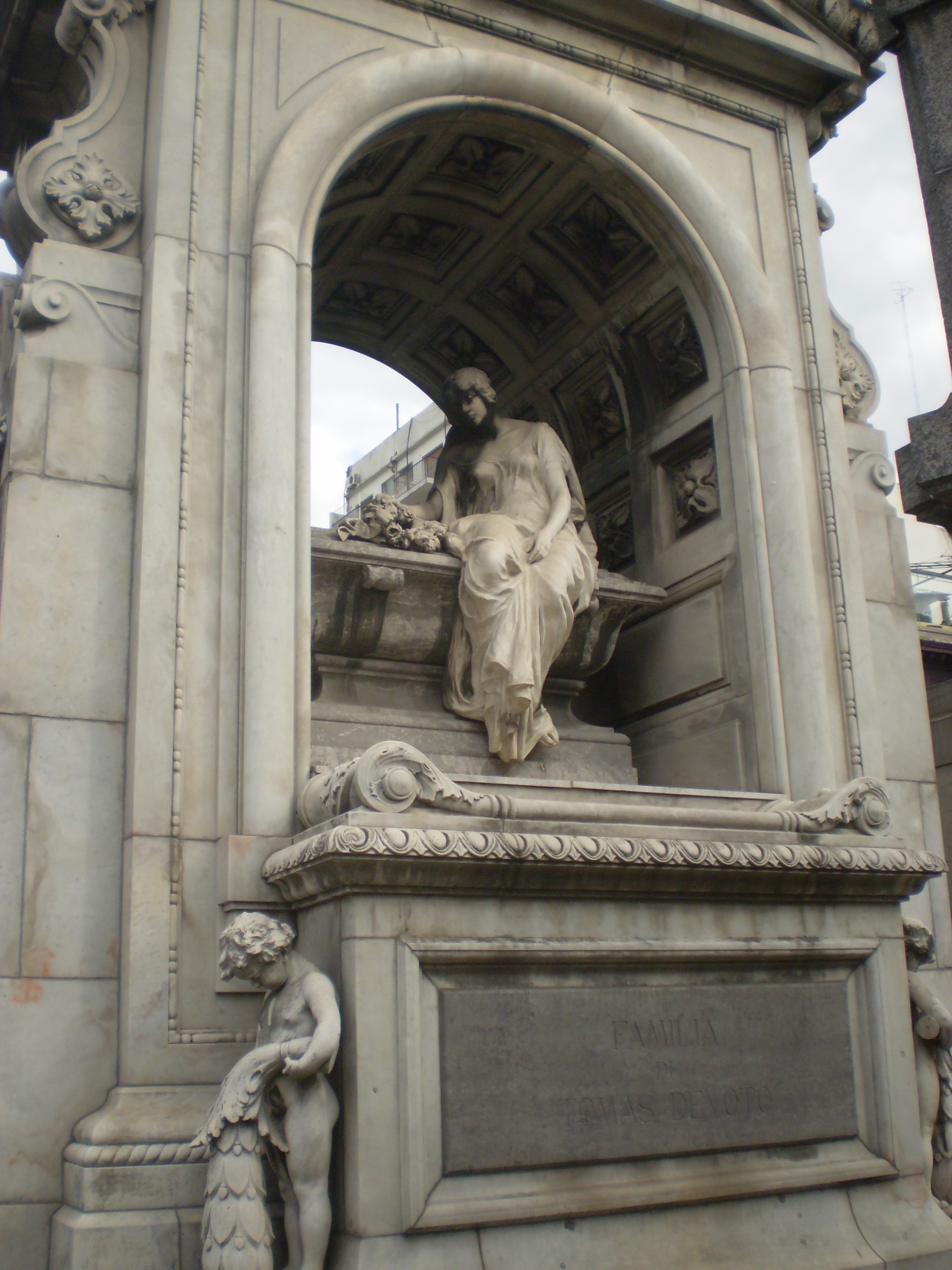|
María Lorenza Barreneche
María Lorenza Barreneche Iriarte (3 July 1925 – 5 January 2016) was an Argentine public figure and wife of the late President Raúl Alfonsín. She held the position of First Lady of Argentina from 1983 until 1989. Barreneche was born in 1926 in Chascomús, Buenos Aires Province, to Felipe Barreneche Echaide (1896–1984) and María Lorenza Iriarte Hospital (1898–1989). She was of Basque descent. She met her husband, Raúl Alfonsín, a law student who was also born in Chascomús, at a masquerade ball during the 1940s. The couple who married in 1948, had six children namely Raúl Felipe (b. 1949), Ana María (b. 1951), Ricardo (b. 1953), Marcela (b. 1955), María Inés (b. 1957) and Javier Ignacio (b. 1959). Barreneche, who disliked politics, focused on raising their children during her husband's political career. Former President Raúl Alfonsín died on 31 March 2009. Barreneche was unable to attend his state funeral due to her own poor health. Barreneche had suffered fr ... [...More Info...] [...Related Items...] OR: [Wikipedia] [Google] [Baidu] |
First Lady Of Argentina
First Lady or First Gentleman of Argentina (), also known as First Lady or First Gentleman of the Argentine Nation (), is a title typically held by the spouse of the president of Argentina, concurrent with the president's term in office. Although the first lady's role has never been codified or officially defined, she figures prominently in the political and social life of Argentina. The First Lady of Argentina is the hostess of the Quinta de Olivos, and on special occasions of the Casa Rosada. Role The first lady or first gentleman is not an elected position, carries no official duties and brings no salary. Nonetheless, he or she participates in humanitarian and charitable work. Furthermore, many have taken an active role in campaigning for the president with whom they are associated. Some facts about the first ladies and gentlemen of Argentina: * Juana del Pino y Vera Mujica, whom born in Uruguay and Regina Pacini, whom born in Portugal are the only two First Ladies of Argenti ... [...More Info...] [...Related Items...] OR: [Wikipedia] [Google] [Baidu] |
Basque People
The Basques ( or ; ; ; ) are a Southwestern European ethnic group, characterised by the Basque language, a common culture and shared genetic ancestry to the ancient Vascones and Aquitanians. Basques are indigenous to, and primarily inhabit, an area traditionally known as the Basque Country ()—a region that is located around the western end of the Pyrenees on the coast of the Bay of Biscay and straddles parts of north-central Spain and south-western France. Etymology The English word ''Basque'' may be pronounced or and derives from the French ''Basque'' (), itself derived from Gascon ''Basco'' (pronounced ), cognate with Spanish ''Vasco ''(pronounced ). Those, in turn, come from Latin ''Vascō'' (pronounced ; plural '' Vascōnēs''—see history section below). The Latin generally evolved into the bilabials and in Gascon and Spanish, probably under the influence of Basque and the related Aquitanian (the Latin /w/ instead evolved into in French, Ita ... [...More Info...] [...Related Items...] OR: [Wikipedia] [Google] [Baidu] |
Argentine People Of Basque Descent
Argentines, Argentinians or Argentineans are people from Argentina. This connection may be residential, legal, historical, or cultural. For most Argentines, several (or all) of these connections exist and are collectively the source of their being Argentine. Argentina is a multiethnic society, home to people of various ethnic, racial, religious, denomination, and national origins, with the majority of the population made up of Old World immigrants and their descendants. As a result, Argentines do not equate their nationality with ethnicity, but with citizenship and allegiance to Argentina. Aside from the indigenous population, nearly all Argentines or their ancestors immigrated within the past five centuries. Among countries in the world that have received the most immigrants in modern history, Argentina, with 6.6 million, ranks second to the United States (27 million), and ahead of other immigrant destinations such as Canada, Brazil and Australia. Ethnic groups Overview ... [...More Info...] [...Related Items...] OR: [Wikipedia] [Google] [Baidu] |
First Ladies And Gentlemen Of Argentina
First Lady or First Gentleman of Argentina (), also known as First Lady or First Gentleman of the Argentine Nation (), is a title typically held by the spouse of the president of Argentina, concurrent with the president's term in office. Although the first lady's role has never been codified or officially defined, she figures prominently in the political and social life of Argentina. The First Lady of Argentina is the hostess of the Quinta de Olivos, and on special occasions of the Casa Rosada. Role The first lady or first gentleman is not an elected position, carries no official duties and brings no salary. Nonetheless, he or she participates in humanitarian and charitable work. Furthermore, many have taken an active role in campaigning for the president with whom they are associated. Some facts about the first ladies and gentlemen of Argentina: * Juana del Pino y Vera Mujica, whom born in Uruguay and Regina Pacini, whom born in Portugal are the only two First Ladies of A ... [...More Info...] [...Related Items...] OR: [Wikipedia] [Google] [Baidu] |
2016 Deaths
This is a list of lists of deaths of notable people, organized by year. New deaths articles are added to their respective month (e.g., Deaths in ) and then linked below. 2025 2024 2023 2022 2021 2020 2019 2018 2017 2016 2015 2014 2013 2012 2011 2010 2009 2008 2007 2006 2005 2004 2003 2002 2001 2000 1999 1998 1997 1996 1995 1994 1993 1992 1991 1990 1989 1988 1987 1986 Earlier years ''Deaths in years earlier than this can usually be found in the main articles of the years.'' See also * Lists of deaths by day * Deaths by year (category) {{DEFAULTSORT:deaths by year ... [...More Info...] [...Related Items...] OR: [Wikipedia] [Google] [Baidu] |
1925 Births
Events January * January 1 – The Syrian Federation is officially dissolved, the State of Aleppo and the State of Damascus having been replaced by the State of Syria (1925–1930), State of Syria. * January 3 – Benito Mussolini makes a pivotal speech in the Italian Chamber of Deputies (Italy), Chamber of Deputies which will be regarded by historians as the beginning of his dictatorship. * January 5 – Nellie Tayloe Ross becomes the first female governor (Wyoming) in the United States. Twelve days later, Ma Ferguson becomes first female governor of Texas. * January 25 – Hjalmar Branting resigns as Prime Minister of Sweden because of ill health, and is replaced by the minister of trade, Rickard Sandler. * January 27–February 1 – The 1925 serum run to Nome (the "Great Race of Mercy") relays diphtheria antitoxin by dog sled across the U.S. Territory of Alaska to combat an epidemic. February * February 25 – Art Gillham records (for Columbia Re ... [...More Info...] [...Related Items...] OR: [Wikipedia] [Google] [Baidu] |
Mauricio Macri
Mauricio Macri (; born 8 February 1959) is an Argentine businessman and politician who served as President of Argentina from 2015 to 2019. He has been the leader of the Republican Proposal (PRO) party since its founding in 2005. He previously served as List of mayors and chiefs of government of Buenos Aires, Chief of Government of Buenos Aires from 2007 to 2015, and was a member of the Argentine Chamber of Deputies, Chamber of Deputies representing Buenos Aires from 2005 to 2007. Ideologically, he identifies himself as a Liberal conservatism, liberal conservative on the Argentine centre-right. Born in Tandil, Macri trained as a civil engineer at the Pontifical Catholic University of Argentina and attended Columbia University for business school. After embarking on a business career, he was kidnapped in 1991. The experience prompted him to enter politics, after being released by his captors. He served as president of football club Boca Juniors from 1994 to 2007, reestablishing ... [...More Info...] [...Related Items...] OR: [Wikipedia] [Google] [Baidu] |
La Recoleta Cemetery
La Recoleta Cemetery () is a cemetery located in the Recoleta, Buenos Aires, Recoleta Barrios and Communes of Buenos Aires, neighbourhood of Buenos Aires, Argentina. It contains the graves of notable people, including Eva Perón, President of Argentina, presidents of Argentina, Nobel Prize winners, the founder of the Argentine Navy, and military commanders such as Julio Argentino Roca. In 2011, the BBC hailed it as one of the world's best cemeteries, and in 2013, CNN listed it among the 10 most beautiful cemeteries in the world. History Franciscan Recollect monks () arrived in this area, then the outskirts of Buenos Aires, in the early eighteenth century. The cemetery is built around the Recollect Convent () and a church, Basilica of Our Lady of the Pillar, Buenos Aires, Our Lady of the Pillar ('), built in 1732. The order was disbanded in 1822, and the garden of the convent converted into the first public cemetery in Buenos Aires. Inaugurated on 17 November of the same year un ... [...More Info...] [...Related Items...] OR: [Wikipedia] [Google] [Baidu] |
La Chacarita Cemetery
The La Chacarita Cemetery (, also known as "Cementerio del Oeste") is a cemetery located in the Chacarita neighborhood in Buenos Aires, Argentina. Occupying an area of 95 hectare, it is the largest in the country.¿Cuál es el cementerio más grande de Argentina? by Ignacio Risso on ''Billiken''. 10 Dec 2022 Chacarita Cemetery has designated areas for members of the Argentine artistic community, including writers, prominent composers and actors. The late Justicialist leader and former President Juan Perón was buried here until his remains were relocated in 2006 to a mausoleum in his former home in [...More Info...] [...Related Items...] OR: [Wikipedia] [Google] [Baidu] |
Masquerade Ball
A masquerade ball (or bal masqué) is a special kind of formal ball which many participants attend in costume wearing masks. (Compare the word "masque"—a formal written and sung court pageant.) Less formal " costume parties" may be a descendant of this tradition. A masquerade ball usually encompasses music and dancing. These nighttime events are used for entertainment and celebrations. History Masquerade balls were a feature of the Carnival season in the 15th century, and involved increasingly elaborate allegorical Royal Entries, pageants, and triumphal processions celebrating marriages and other dynastic events of late medieval court life. The " Bal des Ardents" (''"Burning Men's Ball"'') was held by Charles VI of France, and intended as a ''Bal des sauvages'' (''"Wild Men's Ball"''), a form of costumed ball ('' morisco''). It took place in celebration of the marriage of a lady-in-waiting of Charles VI of France's queen in Paris on January 28, 1393. The King and fi ... [...More Info...] [...Related Items...] OR: [Wikipedia] [Google] [Baidu] |
Buenos Aires Province
Buenos Aires, officially the Buenos Aires Province, is the largest and most populous Provinces of Argentina, Argentine province. It takes its name from the city of Buenos Aires, the capital of the country, which used to be part of the province and the province's capital until it was Federalization of Buenos Aires, federalized in 1880. Since then, in spite of bearing the same name, the province does not include Buenos Aires city, though it does include all other parts of the Greater Buenos Aires metropolitan area. The capital of the province is the city of La Plata, founded in 1882. It is bordered by the provinces of Entre Ríos Province, Entre Ríos to the northeast, Santa Fe Province, Santa Fe to the north, Córdoba Province, Argentina, Córdoba to the northwest, La Pampa Province, La Pampa to the west, Río Negro Province, Río Negro to the south and west and the Autonomous City of Buenos Aires to the northeast. Uruguay is just across the Rio de la Plata to the northeast, and bo ... [...More Info...] [...Related Items...] OR: [Wikipedia] [Google] [Baidu] |








